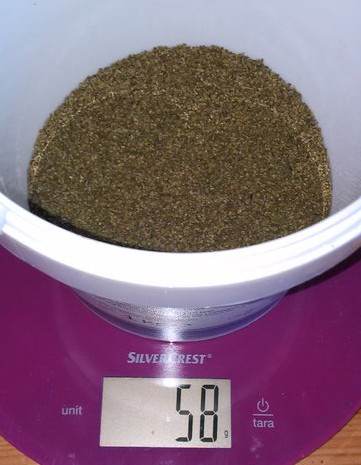Harvesting Nettle Seeds
Posted on 2022-07-26 11:31 in blog • Written by Arno Peters
Let's start with a question I get every time I say that I collect nettle seeds: "Why?" Well, for sowing, of course! ;-) ... and other uses. So, why would you want to collect nettle seeds? Here are a few reasons (Source):
- nettles are a source of minerals: they contain iron, calcium, magnesium, potassium, manganese, silicon and other elements;
- nettles are nutricious: they are a very good source of energy and proteins and they are high in fiber;
- nettles are healthy for you: they contain beta-carotene, folic acid, fatty acids, vitamin A, vitamin C.
While the source study mentions the nettle leaves only, I believe that what makes up the leaves, also makes up the seeds.
We use the dried neetle seeds mainly as an extra ingredient to our overnight oats (1/2 tablespoon for 2 people). I've seen suggestions to put it in bread, sprinkle it over salads, adding it to honey or pesto, making tinctures from them.
Last year I started harvesting nettle seeds. Then it was only a relatively small amount. This year I intend to harvest quite a bit more. This page is to document what I did. The featured image shows the end result of a single harvest: about 60 grams of seed.
I started out by harvesting the tops of nettles that had very thick seed clusters. I used pruning shears to grab and direct the top of the plant into a paper bag. Only when the stem is in the bag, I cut the stem. At home, in the attic, I put down two newspaper sheets and folded the sides up. I did this to prevent seeds from accidentally falling from the window sill.

In the following days, I turned the nettle (with gloves) every day so they would dry out evenly. It was a warm week with lots of sunshine and after 5 days, the nettle had completely dried out. I separated the stem from the rest with a bit of rubbing.
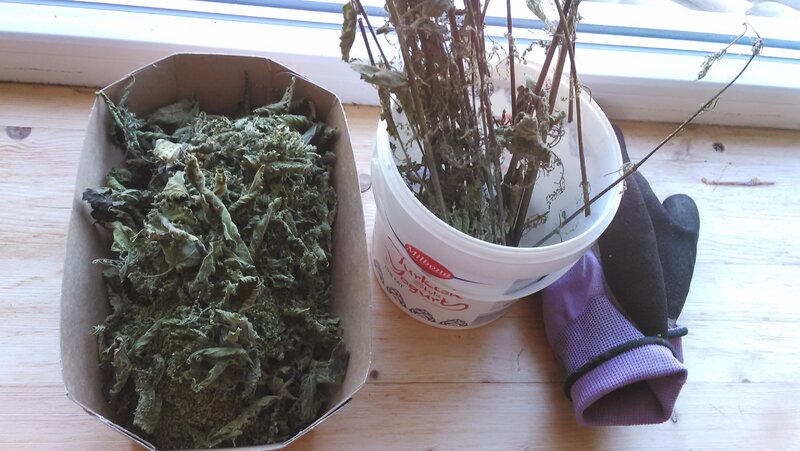
Next step was to remove most of the bigger elements from the collection. I did this by hand. I shook the container to make the seeds collect at the bottom, leaving the rest floating on top.
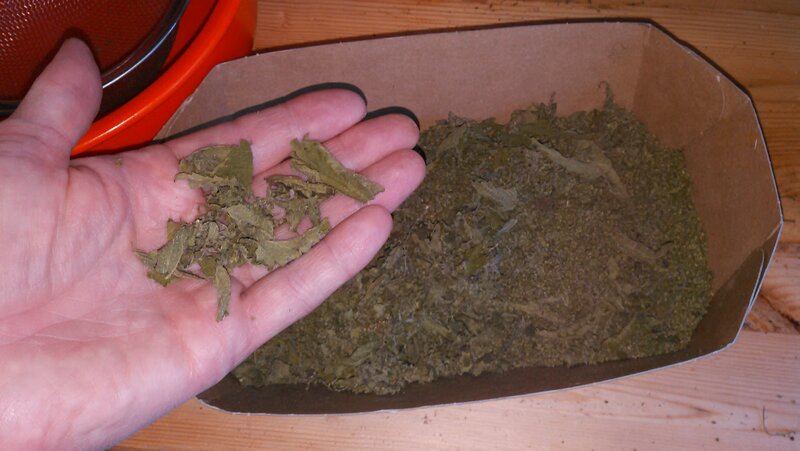
The bottom container is what I was left with after doing this.

The next step in the process is to separate the seeds from the finer chaff. For this I use a metal sieve.
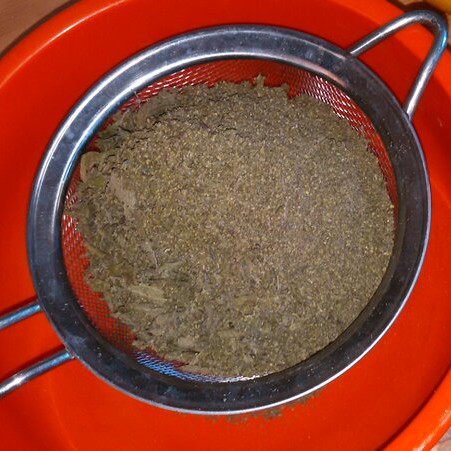

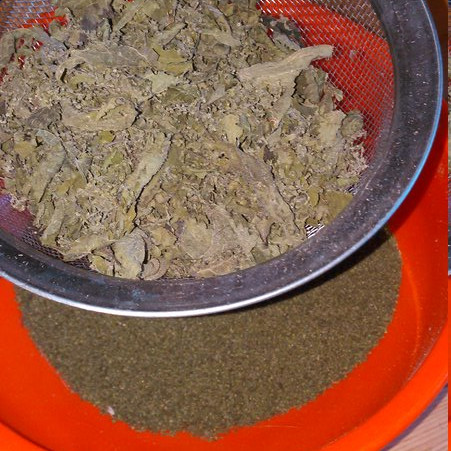
The end result:
